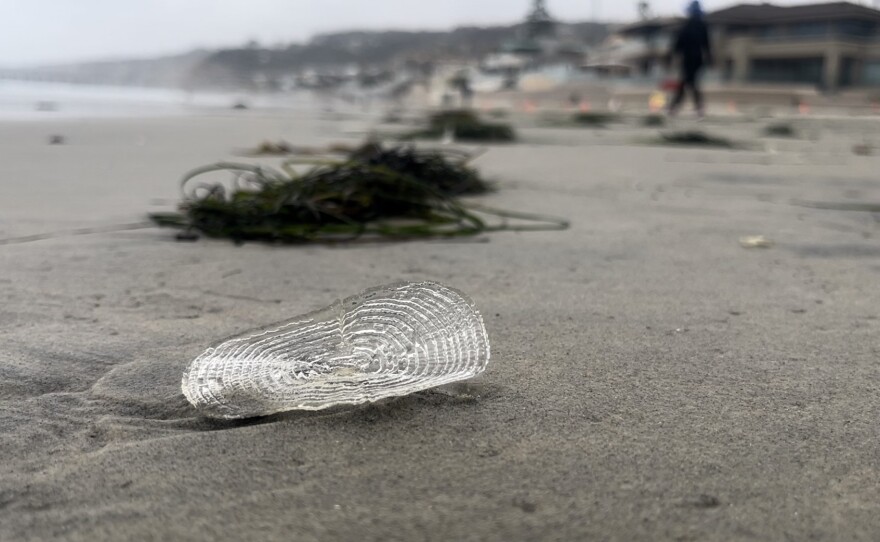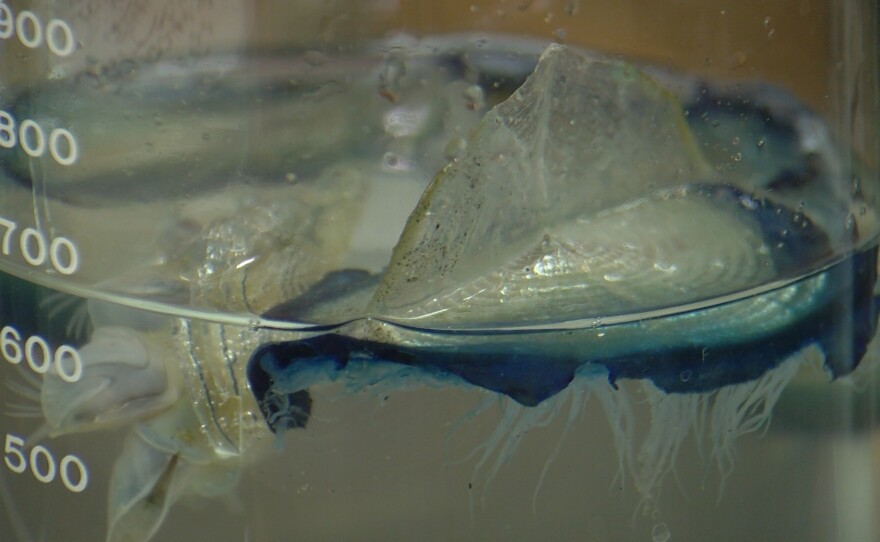San Diego beachgoers may have noticed translucent oval-shaped disks with sails dotting the shore in recent weeks.
While they might look like plastic, they’re actually a kind of zooplankton called velella velella. They’re also known as “by-the-wind sailors” for the sails along their tops that carry them along the ocean’s surface.
“Because of that sail, they often get blown ashore in times of high shoreward winds and currents,” said Anya Stajner, who studies zooplankton at UCSD’s Scripps Institution of Oceanography.

Some velella sails go to the right, while others go to the left.
“The right-facing sails are rare in San Diego,” Stajner said. “We get the left-facing sails because of the prevailing winds here.”
Along with shoreward winds, there has to be enough nutrient-rich water flowing up to the ocean’s surface.
“They’re really ephemeral in nature,” Stajner said of the velella strandings. “It all depends on whether or not we get all these factors lining up.”
Velella have a bright blue ring around their edge when they’re in the ocean. Once they wash up on the shore, they turn translucent.

Velella catch their prey – mostly small crustaceans called copepods — with tiny tentacles on the underside of their bodies. Velella stings aren’t usually harmful to humans, but scientists recommend avoiding touching your eyes or mouth after handling them.
“But if you’re a copepod, look out,” Stajner said. “The velella will get you.”
Their predators include ocean sunfish.
“They sort of swim on over to the velella and open their mouth, and in go the velella,” Stajner said. “Kind of like Pac-Man.”
Stajner said beachgoers, swimmers and surfers should keep an eye out for the velella while they’re here.
“You don’t know what you’re missing if you’re missing it,” she said. “ Even if they’re clear, there’s so much to see.”






